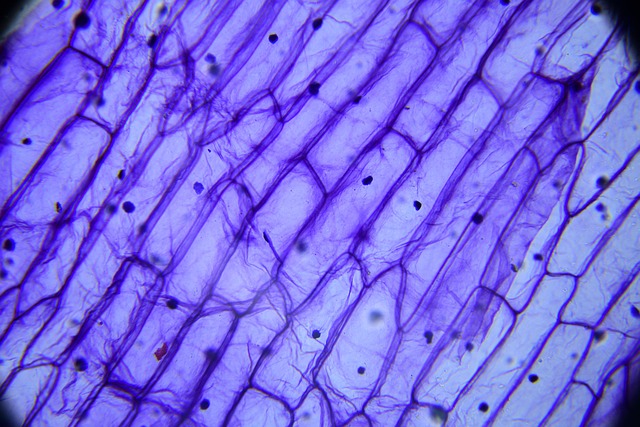GLP-1 drugs mimic natural gut hormone GLP-1 to regulate blood sugar in diabetes. They activate receptors, stimulating insulin and suppressing glucagon, offering superior glycemic control compared to oral medicines. Additionally, they reduce appetite and promote weight loss. Clinical trials show their safety and efficacy, with minimal side effects like nausea or diarrhea. Prescription guidelines, dosage management, patient education, and regular monitoring are crucial for effective use. Future research aims to enhance GLP-1 drug therapy through improved delivery methods, longer durations, and combined treatments.
“Unraveling the potential of GLP-1 receptor agonists (GLP-1 drugs) in diabetes management, this comprehensive guide offers a deeper understanding of these innovative treatments. From basic concepts and mechanisms of action to clinical trials, prescription guidelines, patient education, and future prospects, each section provides crucial insights for healthcare professionals and those seeking effective diabetes solutions. Discover how GLP-1 drugs are revolutionizing diabetes care with their dual benefits in glycemic control and weight management.”
Understanding GLP-1 Receptor Agonists: Basic Concepts

GLP-1 receptor agonists are a class of drugs that mimic the effects of the gut hormone glucagon-like peptide-1 (GLP-1). This hormone is naturally produced in response to food intake, playing a crucial role in regulating blood sugar levels. By activating GLP-1 receptors, these agonist drugs stimulate insulin secretion when blood glucose is high and inhibit glucagon release, helping to lower blood sugar. This dual action makes them an effective treatment for type 2 diabetes, as they not only improve glycemic control but also promote weight loss.
The concept behind these agonists is to enhance the body’s natural response to food, improving insulin sensitivity and glucose metabolism. They are considered a game-changer in diabetes management due to their ability to provide better blood sugar control compared to traditional oral medications. Additionally, GLP-1 drugs have been shown to reduce appetite, leading to increased satiety and subsequent weight loss, making them a promising option for weight management as well.
Types and Mechanisms of Action in Diabetes Management

GLP-1 receptor agonists, or GLP-1 drugs, are a class of medications designed to mimic the effects of the natural hormone glucagon-like peptide-1 (GLP-1). These drugs play a significant role in diabetes management by targeting specific receptors in the body. There are several types of GLP-1 drugs, each with slightly different mechanisms of action. Some work by slowing down the breakdown of GLP-1, increasing its natural duration in the body, while others directly stimulate GLP-1 receptors, leading to enhanced insulin secretion and reduced glucagon release.
The primary mechanism behind their effectiveness lies in their ability to improve glycemic control. By activating GLP-1 receptors, these drugs promote insulin production in a glucose-dependent manner, meaning they stimulate insulin release only when blood sugar levels are high. This precise action helps lower blood glucose levels effectively while minimizing the risk of hypoglycemia, making them valuable tools in diabetes treatment and management.
Clinical Trials: Efficacy and Safety Profile

Clinical trials have played a pivotal role in shaping our understanding of GLP-1 receptor agonists as a therapeutic class, demonstrating their efficacy and safety profile. These studies have provided invaluable insights into how GLP-1 drugs can effectively manage diabetes, particularly type 2 diabetes. Through rigorous research, scientists have uncovered the benefits of these medications in lowering blood sugar levels, improving insulin secretion, and reducing the risk of hypoglycemia—all while offering a relatively benign side effect profile.
The safety and efficacy data from clinical trials are essential in guiding healthcare professionals’ prescriptions and patient management. The results consistently show that GLP-1 receptor agonists can lead to significant reductions in HbA1c levels, making them a powerful tool in diabetes treatment. Furthermore, these drugs have been well-tolerated, with the most common side effects being mild and transient, such as nausea or diarrhea, highlighting their potential for improving quality of life for individuals living with diabetes.
Prescription and Dosage Guidelines for Healthcare Professionals

Prescription and dosage guidelines for healthcare professionals play a crucial role in ensuring the safe and effective use of GLP-1 receptor agonists, or GLP-1 drugs as they are commonly known. These medications have revolutionized diabetes management by mimicking the effects of the natural hormone GLP-1, which stimulates insulin secretion and suppresses glucagon release. Healthcare providers must be well-versed in selecting the appropriate drug, considering patient factors such as age, weight, kidney function, and other comorbidities.
Dosage adjustments are essential, particularly for individuals with reduced renal function, as GLP-1 drugs are primarily metabolized by the kidneys. Starting doses should be individualized, often beginning low and gradually increasing to optimize blood sugar control while minimizing side effects. Regular monitoring of patient response and blood work is vital to make informed decisions regarding dosage modifications or switching to alternative GLP-1 drug regimens.
Patient Education: Lifestyle Integration and Side Effects

Patient education plays a pivotal role in the successful management of GLP-1 receptor agonists, or GLP-1 drugs. It’s crucial to empower individuals with knowledge about how these medications work, their benefits in blood sugar control, and potential side effects. Healthcare providers should stress the integration of lifestyle modifications alongside drug therapy, emphasizing diet, exercise, and regular monitoring. This comprehensive approach ensures patients understand the importance of consistent self-care for optimal results.
When discussing side effects, transparency is key. Common GLP-1 drug side effects like nausea, vomiting, or diarrhea should be openly addressed to prevent patient alarmism. Providing practical tips on managing these symptoms can enhance patient adherence and satisfaction with treatment. Encouraging open communication between patients and healthcare teams fosters a supportive environment, enabling effective navigation of potential challenges associated with GLP-1 drugs.
Future Prospects and Research Directions in GLP-1 Drug Therapy

The future prospects of GLP-1 drug therapy look promising, with ongoing research focusing on enhancing efficacy and safety profiles. One area of interest is the exploration of new delivery methods, aiming to improve patient convenience and adherence. For instance, sustained-release formulations could offer once-daily dosing, potentially increasing treatment compliance. Additionally, advancements in technology may facilitate the development of oral GLP-1 drugs with improved absorption, overcoming current challenges associated with degradation in the gastrointestinal tract.
Further research directions include identifying specific patient populations that may benefit most from GLP-1 receptor agonist therapy and understanding long-term effects. Personalized medicine approaches could tailor treatments to individual needs, optimizing results. Furthermore, studies investigating the potential of combining GLP-1 drugs with other therapeutic modalities in metabolic disorders will be valuable, aiming to achieve synergistic effects and better patient outcomes.
